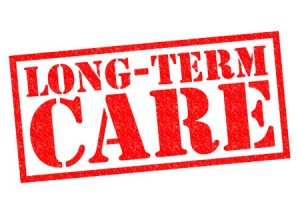Protecting Portfolios through Long-Term Illness

In retirement planning there are no shortage of variables to take into consideration. One of the most overlooked and important are strategies that not only help clients achieve their goals, but also help protect their assets from risk. Most risks like taxes, inflation, diversification and market volatility, are well-known and part of nearly all functional retirement plans. But all too often the strategy doesn’t concern itself with one of the biggest financial risks that even the best retirement planning efforts might not overcome: the possibility of long-term health care expenses.
A recent survey shows that fewer than 1 in 4 people are confident that their retirement savings will be enough to pay for any long-term care services if needed and still be able to fund their retirement. The survey also showed that only 1 in 5 clients have taken the time to discuss long-term care planning with their retirement planning advisor. Only 17% noted that they have purchased an insurance product geared towards long-term care expenses.
This can lead to very expensive decisions down the road. The national average for the basic one-bedroom in an assisted living facility currently rests at $51,000 annually. A one year stay in a private room at a nursing home is more than $97,000. Even if clients plan on receiving care at home, the average cost of the assistance of a home health aide is $22 per hour, registered nurses cost about $80 per hour.
When held against the current state of retirement savings in the U.S., this is quite an eye opener. Most households who have a 401(k) or IRA have a median balance in their retirement accounts of $104,000. A relatively minor long-term care expense would completely erode these savings very quickly. It’s estimated by financial professionals that clients who experience a long-term care need without protection could face drawing their retirement down at a rate of 2-3x faster than previously planned for.
This kind of information can be overwhelming for any clients. However, there are ways to increase awareness and help clients prepare properly while they’re still healthy and in the retirement planning stage. These ideas could, hopefully, soften the blow if they do need long-term care in the future.
Plan Early
People tend to put off long-term care planning and discussions until it’s too late, too far in their later years to adequately deal with the expenses. However, health conditions can change quickly and this can force families to make decisions in a hurry when no option is good. Additionally, purchasing insurance products for long-term care can be more costly for older policy enrollees. They could even be denied depending on their current health status.
Discuss Potential Care Giving with Family
This is another conversation that people tend to put off because it’s uncomfortable and no one anticipates being so sick they would require long-term care. The fact is, most long-term care situations start with family providing help in the beginning. It’s important to discuss that it’s likely that care needs are can often increase as time goes on. This might mean major sacrifices by the family caregiver, meaning time away from their family or children, having an aging parent move into their home or reducing work hours. There will most likely be a point in time where the medical skills and knowledge needed for care will exceed the caregiver’s capabilities.
Taking all these things into consideration will allow clients to ensure their retirement planning efforts properly and accurately accounts for the care that loved ones can provide. A prudent plan will account for the possibility of a transition to professional help or even a combination of family and professional help if situations warrant.
Understand Medicare, Medicaid and Health Insurance Coverage
It’s common for people to avoid long-term care discussions because they’re under the impression that Medicare, Medicaid, or health insurance will cover any problems that may occur. The harsh reality is that Medicare only covers procedures that are medically necessary, focusing on post-acute, short-term services. It doesn’t cover personal care costs like assistance with bathing, eating or other daily activities, which are the biggest aspects of long-term care.
Medicaid provides long-term care benefits, but these individuals must have limited resources and will need to spend down assets to a point where it demonstrates the need for governmental support. That would mean all retirement savings will need to be spent first before Medicaid could even be considered an option.
For older individuals, private health insurance can be cost prohibitive, with uneven coverage, high deductibles or co-pays. With so many plan options, it is imperative to understand what coverage is available, the pertinent deductibles to activate full coverage and the co-pays necessary for continued coverage once the deductible is met.
Long-term care has been an issue for aging individuals for time immemorial. However, it has only been in recent decades that the costs of such care have become prohibitive in even semi-regular situations. Prudent advisors will begin conversations about long-term care alongside any retirement or estate planning sessions because this care, when it is needed, can throw all other plans out the window.
